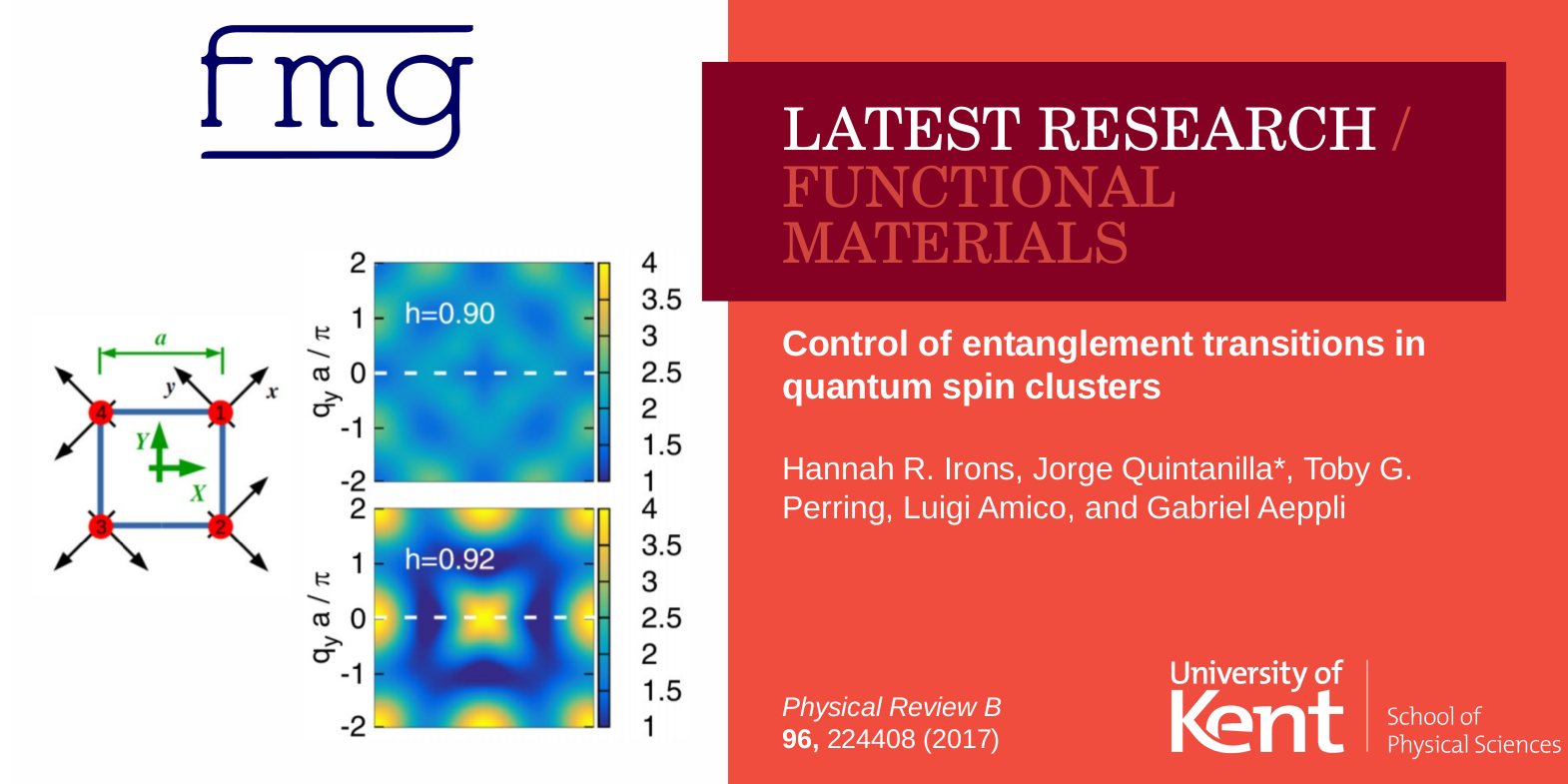 In a recently-published paper we propose a way to detect an elusive phenomenon that could be exploited in future quantum computers by scattering neutrons off tiny magnets the size of molecules. The phenomenon in question involves entanglement, which is one of the most mysterious features of quantum physics: two or more entities can be in a state where some property is completely undetermined, yet when we acquire knowledge of that property for one of the entities, through a measurement, its value becomes fixed in all the others – instantaneously! In spite of its weirdness, entanglement is believed to be present (and abundant) in lots of systems, such as magnetic materials where the entities are the magnetic moments, or “spins”, of individual atoms. There are high hopes that such “quantum magnets” could one day be used in quantum computers, which exploit entanglement to beat classical computers at complicated mathematical tasks.
In a recently-published paper we propose a way to detect an elusive phenomenon that could be exploited in future quantum computers by scattering neutrons off tiny magnets the size of molecules. The phenomenon in question involves entanglement, which is one of the most mysterious features of quantum physics: two or more entities can be in a state where some property is completely undetermined, yet when we acquire knowledge of that property for one of the entities, through a measurement, its value becomes fixed in all the others – instantaneously! In spite of its weirdness, entanglement is believed to be present (and abundant) in lots of systems, such as magnetic materials where the entities are the magnetic moments, or “spins”, of individual atoms. There are high hopes that such “quantum magnets” could one day be used in quantum computers, which exploit entanglement to beat classical computers at complicated mathematical tasks.
One major obstacle is finding ways to control the amount and type of entanglement between individual spins. A mysterious phenomenon called the “entanglement transition” offers a tantalising possibility. It was predicted in the 1980’s for interacting spins under the influence of an externally-applied magnetic field. At the transition, the way the spins are entangled, as well as the spatial extent of that entanglement, changes qualitatively. Unfortunately, there have been no experimental observations of this phenomenon. Our collaboration involving physicists from the UK, Switzerland and Italy have now proposed a way to observe the entanglement transition experimentally. Our calculations show this can be achieved by scattering neutrons off materials known as “molecular nano-magnets” – crystals made up of large molecules that act as tiny individual magnets with only a few spins in each magnet. This could pave the way to a novel, single-molecule quantum computer architecture.
The paper appeared originally in the arXiv at https://arxiv.org/abs/1704.08146. The full reference and link to the published version is
Control of entanglement transitions in quantum spin clusters
Hannah R. Irons, Jorge Quintanilla, Toby G. Perring, Luigi Amico, and Gabriel Aeppli
Phys. Rev. B96, 224408 – Published 6 December 2017
https://doi.org/10.1103/PhysRevB.96.224408
